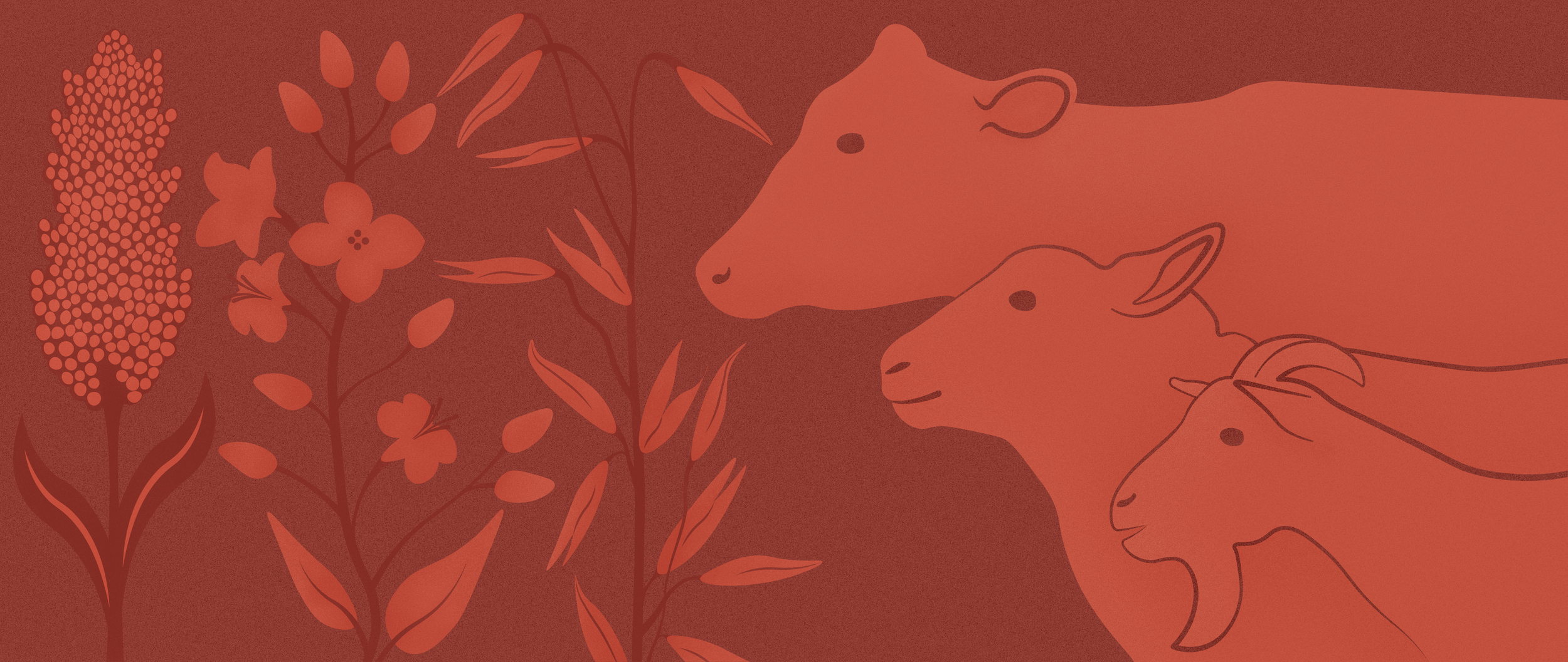
An Investment in Nature is an Investment into our Future:
Opportunities for altering the way farmland is used in Australia
The future of Australia’s land use should be decided based on how it can benefit the Australian people.
Australia is an incredibly diverse country, home to 6,249 unique ecosystems. The country is classified into 89 geographically distinct bioregions based on geology, landform, common climate, native vegetation and species information.
Sadly, this diversity is under threat from rapidly expanding agriculture, mining and urbanisation across the country. Now, just 50% of Australia’s forests and bushlands remain intact as compared to pre-European arrival, resulting in devastatingly reduced native habitat and wildlife populations.
Nature is our life support system - without it, all that we need to survive could be taken from us. If we instead choose to protect nature, we can ensure we pass down a thriving environment to secure the safety and wellbeing of generations to come.
Despite the long perpetuated idea that our agriculture system brings unmatched benefits to the Australian community, inconsistencies in the way it benefits the Australian community can be observed. Around 55% of Australia’s landmass is dedicated to agriculture, whilst exporting 72% of production, and employing just 2.5% of Australia’s working population. In short, we are using and degrading our precious ecosystems and the animals who rely upon them for a predominately export focused industry that employs a comparatively small proportion of our community.
This three part report series seeks to evaluate the inequities in Australian land benefitting the Australian people, and reveal the positive opportunities that lie ahead for change, for everyone.
Download part one of the report:
Hear from co-authors Alix Livingstone and Jailene Santana on some of the key findings of the report, as well as why protecting biodiversity and redesigning our food systems are critical to mitigating the worst impacts of the climate crisis.
Part one: Australia’s farming - an outlook
Australia’s farming industry can be broken down into three major categories; animal agriculture, broadacre cropping and horticulture. Accounting for more than half of Australia’s landmass, agriculture has been identified as the primary driver of species extinction and habitat loss across the country. Hard hooved animals were introduced to the Australian landscape just over 200 years ago, resulting in devastating environmental degradation. Harmful fertilisers are applied to croplands in an attempt to replace some of the nutrients lost from our soils, and wildlife who interfere with monocropping ventures are lethally controlled.
Part one of this report examines the agriculture industry's contribution to the Australian community through employment and exports, as well as its impact on the natural environment through emissions, water use, and land use (degradation).

Part two: Food systems in crisis
The survival of our food system is intimately linked to the health of our natural environment. The climate crisis, which is driven by our impact on the natural world, is placing unprecedented pressure on our food system, with global food insecurity set to worsen. Ensuring our food system is secure, whilst freeing up land to return to nature, should be a priority to mitigate the impacts of climate change. Looking to First Nations people, who have long standing, valuable knowledge on caring for the natural Australian environment has been identified by the United Nations as a key to mitigating the impacts of the climate crisis.
Part three:
An investment in protected areas is an investment in our community
Despite the complex challenges we and our natural world faces, there are exciting opportunities for change that lie ahead.
The value of nature extends far beyond the resources we can extract from it. The natural world is responsible for the health of our waterways, air, climate, animals and ourselves and the need to protect it is more urgent than ever.
Part three of our report series seeks to highlight just some of the ways in which nature can be valuable and support our community, without being destroyed.

Moving forward, together
-

A reduction in ruminant livestock herds
The red meat industry, which raises ruminant animals for slaughter, is the most land intensive farming sector in Australia and is responsible for widespread environmental decline. With around 70-80% of Australia’s red meat production exported overseas, we are faced with an opportunity to reduce our ruminant herds significantly, freeing up land for rewilding, and opening the door for ecotourism ventures to support local economies.
Policy makers should seek to create a just transition plan, and begin scaling back Australia’s red meat production. This would help ensure the government can deliver on targets outlined in the Threatened Species Action Plan: Towards Zero Extinctions 2022-2032 and the Nature Positive Plan: better for the environment, better for business.
-

Incentivising biodiverse, community-based food systems
Small-scale agriculture, and the development of biodiverse food systems, is integral to ensuring food security and the protection of our natural world. Incorporating native plants can facilitate diversification and harness the benefits of their adaptation to local environmental conditions. In the context of Australia, more climate resilient food systems are those which suit the climatic conditions of where they are being grown, working with nature and natural cycles rather than against it, by altering or modifying it
Policy makers should seek expert advice and work alongside stakeholders from a variety of backgrounds, particularly First Nations people, to redesign our food system to ensure future food security and climate resilience.
-

An investment into protected areas
Protected areas act not only to support biodiversity, but to provide essential ecosystem services - which we all rely on for our very survival. Safeguarding the health of our natural environment can ensure a food-secure future for us all. Taking care of, and being connected to our natural environment also has a profound impact on both our mental and physical wellbeing. If we take good care of nature, nature will take good care of us in return.
Policy makers should work to further incentivise re-wilding projects across the country, as well as the establishment of sustainable and ethical ecotourism ventures to help support local economies. Further, a framework should be established to better understand the true value of nature's ecosystem services to both the Australian and global community.

Learn more about agriculture's impact on the natural environment and wildlife
Made possible by our collaborating initiative members
















